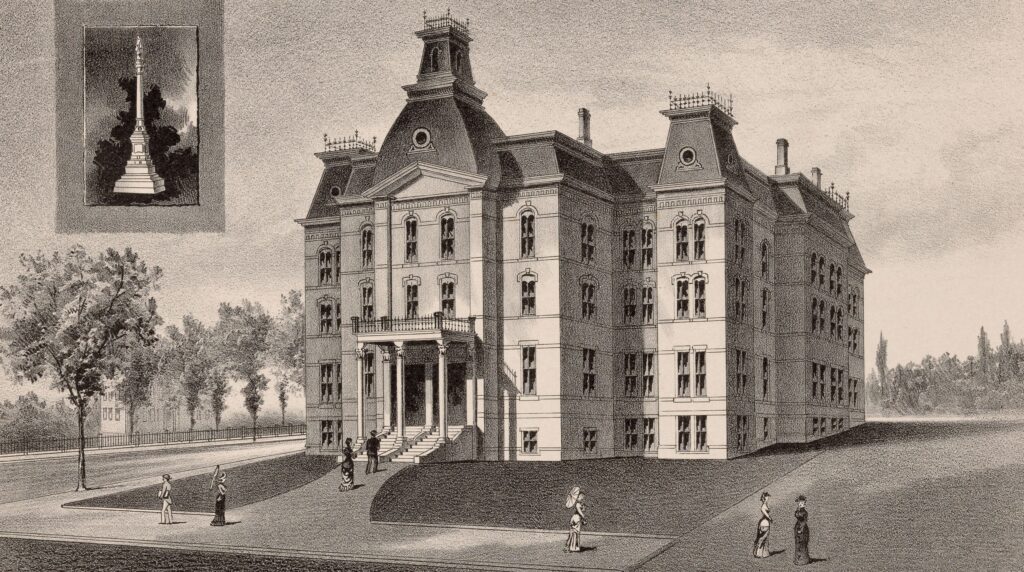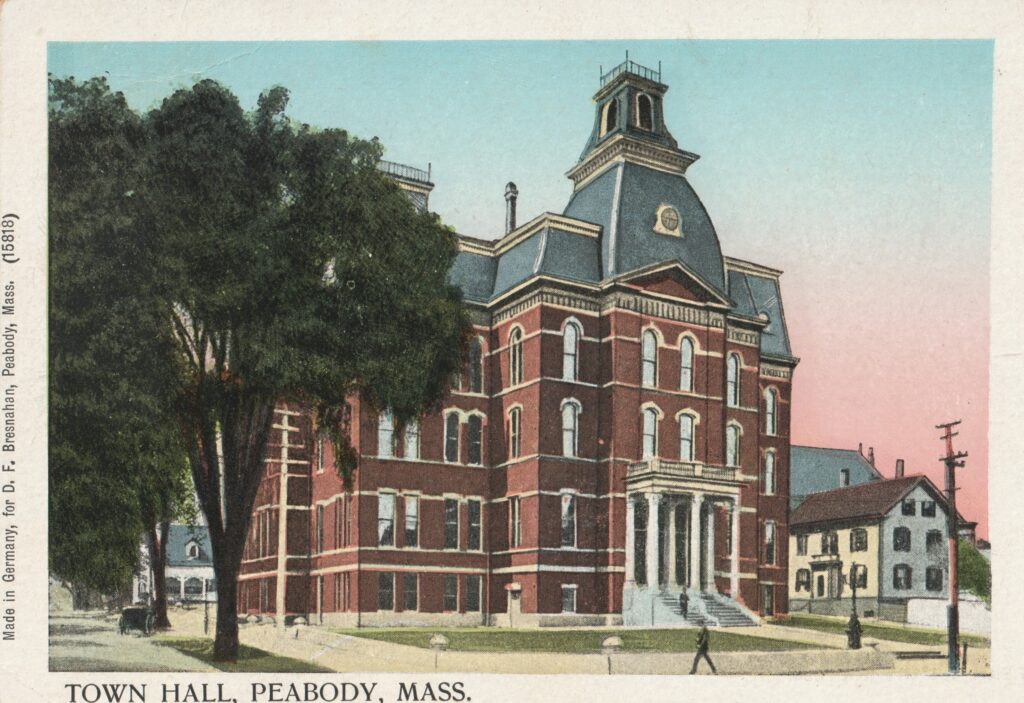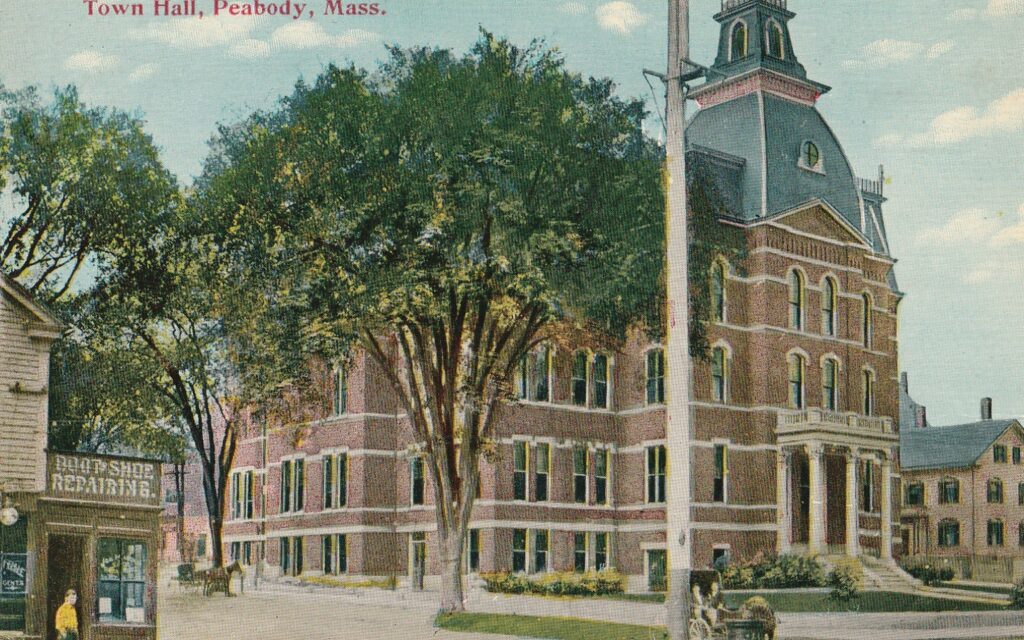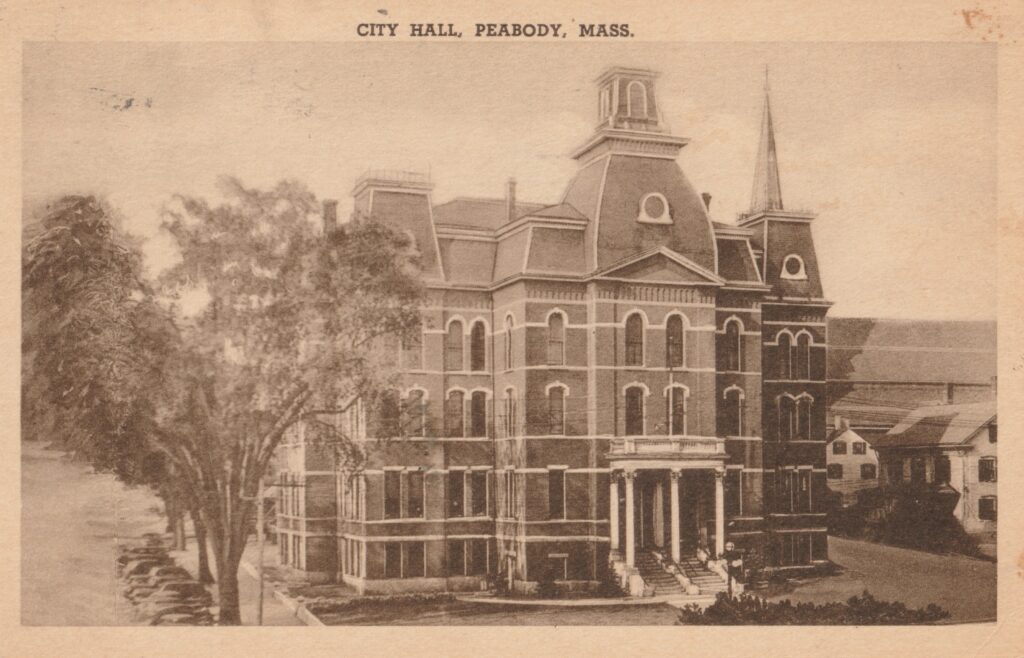
Thank you for clicking on this QR code, one of many to explore along Peabody’s Main Street.
This project is a collaboration between the Peabody Historical Society & Museum and the City of Peabody. We hope you enjoy reading about our history!

Peabody Town Hall. Geo. H. Walker & Co. (1884). Atlas of Essex County, Massachusetts. Boston, Plate 45A.
The town of Peabody had outgrown its Town Hall on Stevens Street, so in 1880, it began the process of building a new, larger building. On April 20, 1882, the town bought 5 buildings and a parcel of land at the corner of Lowell and Chestnut Street for $22,000 from the estate of Elijah W. Upton and William N. Osgood. The site encompassed a total area of 28,990 square feet. The buildings were auctioned off and removed from the land.
Rufus Sargent of Newburyport was hired to design the new Town Hall. It was designed in the Second Empire style, and it was made of brick and Hallowell, Maine granite. The main contractor was Joseph N. Parsons and Co. of Salem. The carpentry was done by Hamilton & Balcomb of Salem, and stonework by Linehan & Putnam of Peabody.
The basement of the building was Peabody’s police station, including 12 jail cells. The first floor was designed for use by the selectmen, with a chamber that could hold 500 people. The second and third level was made into a grand auditorium, sometimes referred to as the “Opera House,” with a capacity of 1,500 people. The ceiling decorations were done by artist Matthew L. Robinson of Boston.
The building was dedicated on November 22, 1883.
- Program, 1884
- Town Hall, Auditorium, circa 1885
- Program, 1891
The Town Hall (later City Hall) hosted many important and interesting events. Here’s a few you may not expect.
- Peabody High School’s graduations took place at the Hall from 1884 to 1946.
- Did you know the Topsfield Fair, or the Essex Agricultural Society Fair, was held in Peabody from 1895 to 1909? The Town Hall was used for the exhibition of flowers and fruit during the fairs.
- In 1917, the Peabody Women’s Club hosted former President Taft as a speaker, to an audience of 1,000 people.
- At the end of World War I, Peabody celebrated with three days of events. At City Hall, there were boxing matches with 1,900 spectators.
- Postcard, 1908
- Postcard, 1914
- Postcard, 1943
- Postcard, 1957
City Hall was restored in the 1970s and re-dedicated in 1980. The large auditorium was re-named after former Councillor Frank L. Wiggin.
Special thanks to the research and writing of historian John Wells. His booklet “The Peabody City Hall: 1883-1980” was the basis of this article.







